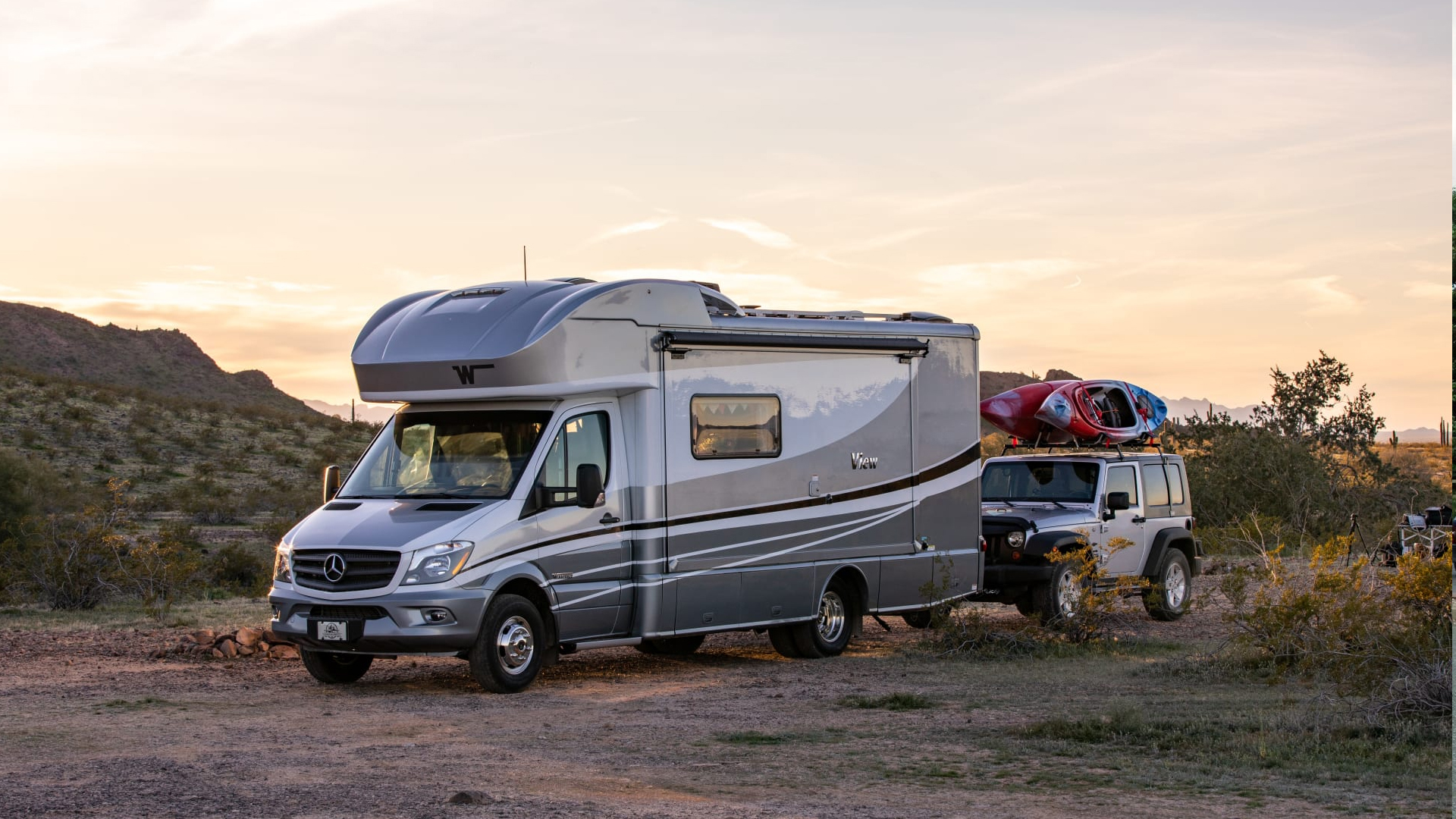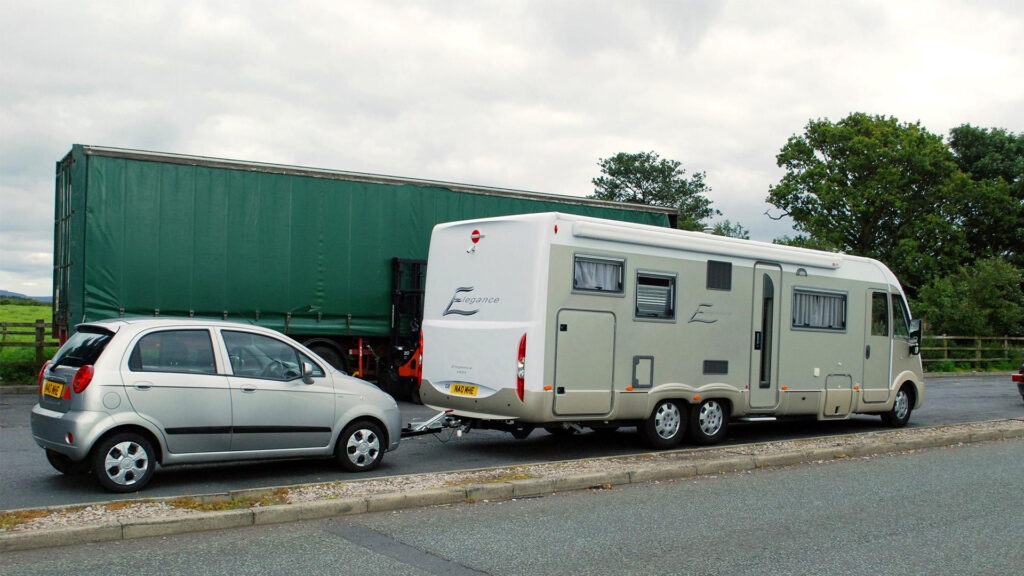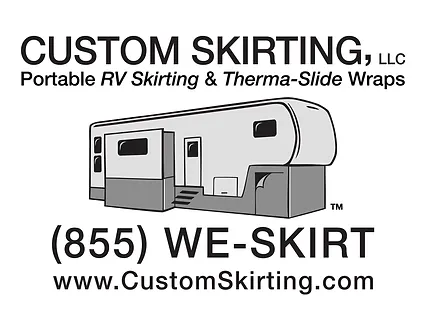
How to Tow a Car Behind an RV: 10 Essential Steps
Table of contents
- Step 1: Determine Your RV’s Towing Capacity
- Step 2: Choose the Right Towing Method
- Step 3: Verify Your Car’s Towability
- Step 4: Invest in Quality Towing Equipment
- Step 5: Install a Proper Braking System
- Step 6: Set Up Proper Lighting and Signals
- Step 7: Prepare Your Car for Towing
- Step 8: Practice Hitching and Unhitching
- Step 9: Adjust Your Driving Technique
- Step 10: Perform Regular Maintenance and Inspections
- Related Articles
Towing a car behind an RV offers increased flexibility and convenience during road trips, allowing travelers to explore their destinations without the hassle of maneuvering a large motorhome. However, proper towing techniques are essential for safety and vehicle protection. Whether you’re new to motorhome towing or looking for a refresher, understanding how to tow a car/vehicle behind an RV is crucial. This guide will walk you through towing a car behind an RV in 10 essential steps, ensuring that you follow the right procedures to avoid damage and ensure a smooth travel experience.
From choosing the right towing method—whether it’s flat towing, dolly towing, or trailer towing—to understanding weight limits, braking systems, and connection procedures, every step matters. Neglecting key safety precautions can lead to costly damage or even accidents on the road.
Step 1: Determine Your RV’s Towing Capacity
Before towing a vehicle behind an RV, it’s essential to determine the towing capacity of your motorhome. Exceeding this limit can lead to severe safety hazards and damage to both vehicles. To find your RV’s towing capacity:
- Check the owner’s manual for towing specifications.
- Look for the Gross Combination Weight Rating (GCWR) and subtract the Gross Vehicle Weight Rating (GVWR) to determine the allowable tow weight.
- Consult the RV manufacturer if you’re uncertain.
Understanding these limits is crucial when learning how to tow a vehicle behind an RV safely.
Step 2: Choose the Right Towing Method

There are three primary methods for towing a car behind a motorhome:
- Four-Down (Dinghy) Towing
- Pros: Easiest to set up, requires minimal equipment, allows all wheels to remain on the ground.
- Cons: Not all vehicles are suitable for this method; may require transmission modifications.
- Tow Dolly
- Pros: Works with most front-wheel-drive vehicles, affordable alternative.
- Cons: Requires additional storage space, extra effort for loading/unloading.
- Trailer/Car Hauler
- Pros: Protects the towed vehicle, works with any vehicle type.
- Cons: Bulky, requires significant storage space.
Choosing the right method is key to successfully towing a car behind an RV without complications.
Step 3: Verify Your Car’s Towability
Not all vehicles can be towed behind an RV. To verify your car’s towability:
- Check the owner’s manual for flat-towing guidelines.
- Look for specific instructions on neutral towing.
- Consult with a mechanic or vehicle manufacturer if modifications are needed.
Ensuring your vehicle is suitable for towing a car behind a motorhome will prevent transmission damage and other costly repairs.
Step 4: Invest in Quality Towing Equipment
Quality towing equipment is vital for a safe towing experience. The essential items include:
- Tow bar (e.g., Roadmaster Sterling All Terrain Tow Bar)
- Base plate kit for securing the tow bar to the vehicle
- Safety cables for added security
- Supplemental braking system
Investing in reliable equipment will enhance the safety and longevity of your setup when learning how to tow a car behind an RV.
Step 5: Install a Proper Braking System
A supplemental braking system is often legally required and significantly enhances safety. Options include:
- Proportional Braking Systems – Adjust braking force based on RV deceleration.
- Pre-Set Braking Systems – Apply a fixed braking force.
The Roadmaster Brakemaster Towed Car Braking System is a popular choice among RVers for its reliability. Installing a proper braking system ensures compliance with legal requirements and improves overall safety when towing a car behind a motorhome.
Step 6: Set Up Proper Lighting and Signals
To ensure that your towed vehicle’s lights are functional:
- Use a wiring harness to connect the car’s lights to the RV’s electrical system.
- Opt for wireless tow lights as an alternative solution.
- Regularly check brake lights, turn signals, and running lights before each trip.
Proper lighting enhances visibility and ensures compliance with road safety regulations when towing a car behind an RV.
Step 7: Prepare Your Car for Towing

Before hitting the road, prepare your car with these steps:
- Disconnect the battery (use a Roadmaster Automatic Battery Disconnect if required).
- Secure loose items inside the vehicle.
- Ensure proper tire pressure to prevent uneven wear.
- Set the transmission in neutral (if applicable).
These precautions help protect your vehicle when towing a car behind a motorhome.
Step 8: Practice Hitching and Unhitching
Before your trip, practice the process in a safe area:
- Attach the tow bar securely.
- Connect all safety cables and electrical components.
- Test lights and braking systems.
- Unhitch and reattach to build confidence in the process.
Mastering these steps ensures a smooth experience when towing a car behind an RV.
Step 9: Adjust Your Driving Technique
Towing a vehicle impacts your RV’s handling. Keep these driving tips in mind:
- Increase following distance to allow for longer braking times.
- Take wider turns to accommodate the extra length.
- Avoid sudden acceleration or braking.
- Check for wind and road conditions that may affect towing stability.
Adjusting your driving habits ensures safety while towing a car behind a motorhome.
Step 10: Perform Regular Maintenance and Inspections
Regular maintenance is crucial for both your RV and towed vehicle, ensuring safety, reliability, and optimal performance on the road. Neglecting even small issues can lead to costly repairs or dangerous situations while traveling. Before each trip, take the time to inspect the following key components:
- Tires: Check both your RV’s and towed vehicle’s tires for proper pressure, tread wear, and any visible damage. Underinflated or worn-out tires can reduce stability and increase the risk of blowouts.
- Hitch Connections: Ensure that all hitch components—tow bars, safety chains, and couplers—are securely fastened and free from rust, cracks, or excessive wear. A loose or faulty connection can lead to dangerous detachment.
- Braking System: Test the supplemental braking system in your towed vehicle (if required) to confirm it’s functioning properly. A well-maintained braking system helps distribute stopping power evenly, reducing strain on your RV’s brakes.
- Lighting and Electrical Components: Verify that all brake lights, turn signals, and wiring connections between your RV and towed vehicle are working correctly. Faulty wiring can lead to miscommunication with other drivers and increase the risk of accidents.
Additionally, consider checking fluid levels, suspension components, and overall vehicle alignment to ensure everything is road-ready. Routine checks not only prevent unexpected issues but also keep your towing setup in peak condition when learning how to tow a car behind an RV.
Towing a car behind an RV enhances travel convenience, but it requires careful preparation and adherence to safety measures. By following these 10 essential steps, you can ensure a safe and efficient motorhome towing experience. From choosing the right towing method to regular maintenance, mastering these techniques will give you peace of mind on the road.
Tow with Confidence – Protect Your RV with Custom Skirting!
Keep Your RV in Peak Condition While Towing
When towing a car behind your RV, maintaining optimal performance is crucial. Custom RV Skirting not only insulates and protects your RV’s underside but also reduces drafts, improving energy efficiency and stability on the road. Our Nation’s #1 RV Skirting Solution is custom-tailored on-site for a perfect fit, featuring our exclusive “No-Snap, No-Gap” channel system for superior protection against water, snow, and wind. Designed for durability and convenience, it’s the trusted choice for RVers tackling any adventure.
Upgrade your RV today—Get Custom Skirting for unmatched protection and efficiency!
